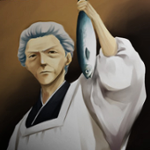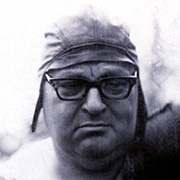|
I decided to try out burmese, is it normal for, particularly the front leg to go completely numb and then it's impossible to walk because the leg collapses unless you chill for a few minutes and let the pain dissipate. Is this stretching my muscles or whatever so eventually it will not do this or am I breaking my leg nerves? E: I am sitting on a zaffu so my knees are lower than my hips, I think. E2: I'd also like to try lotus but my legs don't work that way, is there any way to make them work that way without yoga lessons? Crack fucked around with this message at 22:36 on Jan 26, 2015 |
|
|
|

|
| # ? May 16, 2024 05:35 |
|
The-Mole posted:This really can't be stated emphatically enough. If you're going to sit full or half lotus, you pretty much have to get some serious padding under your rear end. Like 3-6 inches (taller, bigger, or heavier people generally require more elevation). At the right angle, full lotus is basically a self-locking posture that does not require any particular exertion to maintain. There are certain materials which are more conducive also. Yogis wear silk for a good reason. Preserves the 'Chi'. I myself wear silk, meditate on it, sleep in it. The Bhagavad Gita recommended sitting on a tiger skin iirc, but that's obviously a bad idea in this day and age. You'd be surprised at sitting on a deer or other animal hide- they came from sentient creatures. Palms should be facing down, not up. I could do a full lotus when I was young, but what's the point if it distracts you to the point of discomfort? Just showing off. There are yogis in India who become crippled from their legs going to sleep and resultant nerve damage. That said, the full lotus lets you optimize your inner energy the most, the legs to floor the least. The key is the Middle Way, be sensible, ffs.
|
|
|
|
Paramemetic posted:Basically Tibetan monasticism tends to be a little more pragmatic to the realities of the Tibetan culture. I find similarly that there are adjustments made for Western monks within some lineages of Vajrayana - one monk I know, ordained as part of the first group of white dudes to be made full monks in my lineage, works as a postal carrier. That's not to say that that pragmatism doesn't come at a cost, but generally in Vajrayana even monastics have an element of yogic practice, it looks very different than Theravadan monasticism, for example, or the monasticism of some of the Mahayana orders. It shares similarities with some Japanese monastic orders though. What makes one a monk officially? In Karma Kagyu, it seems having undertaken (or at least attempted) a three-year retreat is what makes one a Lama, but I can't say in the few times that I have been there, anyone being referred to as a monk.
|
|
|
|
Monks are males who have received monastic vows. Fully ordained monks have received the training vows and held them then received more vows. In Sanskrit I believe they'd be Bhikkshus. I've never heard that in Karma Kagyu. My understanding is that while a monk is actually called a trapa, most are addressed by lama, and most nuns addressed as ani. Quick key to identifying a monk is robes. If they are in maroon robes plus more maroon or yellow, they are or have been a monk. If they are in maroon plus white, they are or have been a ngakpa or have done a three year retreat.
|
|
|
|
Crack posted:I decided to try out burmese, is it normal for, particularly the front leg to go completely numb and then it's impossible to walk because the leg collapses unless you chill for a few minutes and let the pain dissipate. Is this stretching my muscles or whatever so eventually it will not do this or am I breaking my leg nerves?
|
|
|
|
Rhymenoceros posted:Why not just sit on a chair? A comfy chair even. I sit in a comfy chair most of the day, and I think having a dedicated place in my room with a cushion makes getting into the right mindset easier (might be placebo, I read this as advice somewhere, at least the dedicated space). I think it makes sense though because only using the cushion to meditate links it psychologically and puts me quickly in "meditation mode" when I sit on it whereas I do a ton of things on my chair. I'm comfortable enough on it as it is though, I just felt like trying out a few different postures to see if it made much of a difference.
|
|
|
|
Yeah, for me a chair is "dick around on the computer" rather than a meditative space. I can understand the need and desire for ritual when I have my own, no matter how small and strange. Some things just don't lend themselves to the mindset a beginner like myself is trying to cultivate. Maybe when I have become a better practitioner, I can use a cozier chair.
|
|
|
|
Makes sense. I used to and still sometimes sit cross legged, sort of Burmese style, but after a while a leg will start to complain and eventually it becomes too uncomfortable. So for now it's the ole chair.
|
|
|
|
So I am needing some encouragement. I went to open meditation and a Tsok at the Sangha I mentioned before and things were good, but the last two weeks I showed up for the scheduled open meditation and the doors have been locked. The online schedule said it was still on, so I am not sure what is going on, and honestly I am a bit pissed about driving half an hour to stand out in the cold. I have other options that are further away, and don't work as well with my schedule. I have done pretty well in keeping up a daily meditation practice and have been reading etc, but am really wanting the fellowship. I mean, you can't take refuge without a sangha, right? I'm just trying to find some place to practice. How did you all find a home?
|
|
|
|
SubjectVerbObject posted:So I am needing some encouragement. I went to open meditation and a Tsok at the Sangha I mentioned before and things were good, but the last two weeks I showed up for the scheduled open meditation and the doors have been locked. The online schedule said it was still on, so I am not sure what is going on, and honestly I am a bit pissed about driving half an hour to stand out in the cold. I have other options that are further away, and don't work as well with my schedule. Not sure if what I can say will help, but I live in a pretty suburban area and sangha options are limited with regard to my work schedule/distances needed to travel. As someone who is also just starting down the dharma path I can really empathize with your feeling of yearning for more connection! One thing that I have personally found which as been a great help is the audiodharma.org link in the OP. The site is run by a meditation center in Cali and they audio record sessions pretty much daily. The sessions are simply their daily meetings, and while assuredly not as valuable as finding a sangha in person, listening to the talks and the audience questions has given me a much more vibrant connection to the dharma than I got when I was just reading books from the library. If nothing else perhaps listening to the classes there can give you some energy to keep you motivated while you work towards finding a true sangha. That is my hope for myself at least.
|
|
|
|
SubjectVerbObject posted:So I am needing some encouragement. I went to open meditation and a Tsok at the Sangha I mentioned before and things were good, but the last two weeks I showed up for the scheduled open meditation and the doors have been locked. The online schedule said it was still on, so I am not sure what is going on, and honestly I am a bit pissed about driving half an hour to stand out in the cold. I have other options that are further away, and don't work as well with my schedule. Howdy. Don't worry too much, you're not alone. I live in one of the most sangha-free places in the US, but I've managed to find one. Granted, it's a 45 mile drive, but I try to make it as often as I can. As to how I found it, it was mostly an email saying, "Hey, can I show up? I saw your open practice and study sessions online." and the response was basically, "Yep!" Oddly enough, our sangha is composed of about 50% professional psychiatrists.  Anyway, hang in there. You can use your current situation as part of your practice. As I've gotten older, I've learned to appreciate impermanence more and more. Your current situation likely falls into that category. So, just keep up your practice as best you know how until you find a guru to help you out. Just keep pestering peeps until you get a reply.
|
|
|
|
Rhymenoceros posted:Makes sense. I used to and still sometimes sit cross legged, sort of Burmese style, but after a while a leg will start to complain and eventually it becomes too uncomfortable. So for now it's the ole chair. In the mindfulness course I've been going to they had yoga blocks (block of foam, telephone directory or something would probably suffice) and putting one under the cushion made it a lot more comfortable and no leg complaints. So definitely experiment with elevation if you ever want to go back to the floor, it can make a significant difference.
|
|
|
|
His Holiness the Gyalwang Karmapa Ogyen Trinley Dorma Rinpoche has announced that within the Karmapa tradition he has decided to reinstitute the full monastic vows among women. To this end, he has requested an order of Dharmagupta nuns to ordain some women in the Karma Kagyu tradition with the training and novice vows. This will form the basis for the transmission and ordination of the full vows to the Karma Kagyu nuns. Presently, the Tibetan female monastic tradition is semi-dilapidated, as the Vinaya tradition forming the basis of the Tibetan monastic hierarchy comes from the Mulasarvastivada, which does not include all three levels of ordination for nuns, but rather a single level of ordination that is not equivalent to a bhikshuni. This is fairly big news, consistent with His Holiness the Dalai Lama and Their Holinesses the Gyalwang Drikungpa and Gyalwang Drukpa on the importance of supporting women and bringing women to an equal level. Holiness Chetsang Rinpoche, the Gyalwang Drikungpa, recently conferred the rank of Vajra Master upon the first lay woman in the lineage last year, and has been advocating strongly or the Yogini Project and other female empowering projects. Holiness the Dalai Lama has called for drastic changes in the way Tibetan culture and hierarchy treats women, and Holiness Drukpa has advocated for women through the advancement of his order of Kung Fu nuns. This is yet another step and indicator of the development and growth of Dharma in the modern era and the adaptation of the Vajrayana tradition to modern times after the Chinese occupation. As has often been noted by many great Tibetan masters, the occupation of Tibet and the spreading of the Tibetan diaspora has been tragic for Tibet and her culture, but a magnificent blessing for the rest of the world. Still, many Tibetan cultural values had become somewhat dated, and the Tibetan Buddhist tradition has been having to adapt and catch up to the rest of the world, no longer insulated in its cultural bubble. It is very exciting to see these forward advances from the highest levels of practitioners and teachers in these orders, and the general development of a more universal Buddhism. Buddhism itself is free of all cultural boundaries, and the Buddha taught that Buddhism must always been practiced through the cultural lens of the cultures to which it has spread. While most presentations of Buddhism at present are strongly bound to the cultures that have brought them about, and while out of tradition many of these cultural practices have traveled with Buddhism around the world, it is important that Buddhism be practiced not based on the traditions of older cultures, even historical cultures, but rather continue to grow and flourish in this modern world. Here is the official announcement: http://kagyuoffice.org/gyalwang-karmapa-makes-historic-announcement-on-restoring-nuns-ordination/
|
|
|
|
I'm assuming this monk probably practiced sokoshinbutsu, but this is an interesting article I read (and I find it hard to sit on the cushion for 45 minutes): http://www.foxnews.com/science/2015/01/30/corpse-200-year-old-monk-found-in-lotus-position/
|
|
|
|
Paramemetic posted:His Holiness the Gyalwang Karmapa Ogyen Trinley Dorma Rinpoche has announced that within the Karmapa tradition he has decided to reinstitute the full monastic vows among women. To this end, he has requested an order of Dharmagupta nuns to ordain some women in the Karma Kagyu tradition with the training and novice vows. This will form the basis for the transmission and ordination of the full vows to the Karma Kagyu nuns. That is great news and I really hope the Thai Theravada bhikkuni order can finally gain actual recognition and support. I believe Sri Lanka has already taken this step.
|
|
|
|
Count Freebasie posted:I'm assuming this monk probably practiced sokoshinbutsu, but this is an interesting article I read (and I find it hard to sit on the cushion for 45 minutes): It would be pretty surprising if he did sokoshinbutsu itself because that is a uniquely Japanese thing. There are other practices whereby one will self-mummify, however, and sometimes enlightened teachers just do it without doing anything. They just say "hey I'm gonna be dead in a few minutes, do me a solid and just leave this body here, thanks." Then they die.
|
|
|
|
There are a few Thai temples with bodies like this on display, still pretty well preserved, sitting in meditation for decades after death. http://www.slate.com/blogs/atlas_obscura/2013/09/20/the_mummified_monk_of_ko_samui_who_rocks_a_pair_of_ray_bans.html quote:Radiographs of the mummy have revealed that he still wears his dentures and that in death he has become a hatchery for a native gecko species. The lizards lay eggs in his body cavities, beneath his leathery skin. His brain tissue and organ systems are remarkably intact, although reduced in size due to dehydration.
|
|
|
|
Prickly Pete posted:There are a few Thai temples with bodies like this on display, still pretty well preserved, sitting in meditation for decades after death. It says they eat poisonous lacquer over time, which is what mummifies their bodies...which is, in turn freaking repulsive, vainglorious, and counter to everything buddhism is about.
|
|
|
|
Mr. Mambold posted:It says they eat poisonous lacquer over time, which is what mummifies their bodies...which is, in turn freaking repulsive, vainglorious, and counter to everything buddhism is about. It says the Sokushinbutsu monks do, but like Prickly Pete said, I don't think they all do (including Mr. Ko Samui, but I am not 100%)
|
|
|
|
Mr. Mambold posted:It says they eat poisonous lacquer over time, which is what mummifies their bodies...which is, in turn freaking repulsive, vainglorious, and counter to everything buddhism is about. There are monks out there who use debit cards and own cars. You can find a lot of things "counter to everything buddhism is about" if you look hard enough, in any tradition, among any monastics. I don't necessarily think the mummification of dead monks is in line with Buddhist theology, but there is a long tradition of people paying respect or veneration to the bodies of dead monks. It's really just an interesting cultural manifestation of the teachings. People Stew fucked around with this message at 03:44 on Feb 3, 2015 |
|
|
|
Does anyone agree that meditation is like Troxler's fading except instead of just your vision it's everything, even yourself?
|
|
|
|
Frykte posted:Does anyone agree that meditation is like Troxler's fading except instead of just your vision it's everything, even yourself? Why, is that your experience or do you just think it sounds cute and clever. I agree, it is..
|
|
|
|
I would be surprised if anyone could sit for 20-40 minutes in a decent posture and not have some bizarre perceptual experiences. Generally, when a sensory input isn't changing, the brain will start to filter the perception. This can apply to all the senses, as well as the physical sensation of having a body. When your sitting posture is stable in a way that requires no effort to maintain, the sensation of the body will start falling away, too (in a properly quiet and non-stimulating environment). It's mostly just a side-effect of sitting in a stable posture rather than anything to be read into in any specific way. In Zen, the emphasis is actually to stay in the moment with the breath and not to get carried away in visual or sensory displays or daydreams. Sitting early in the morning or at night before bed will further bring weird elements of hypnagogia into the experience, which makes everything even weirder. Again, the weird perceptual stuff that happens while sitting is not the goal of sitting (it's usually considered a distraction or manifestation of illusion, or whatever), but it's a rather vivid way of knowing that your posture is getting good. "A hair's breadth deviation and you're out of tune" so to speak. Basically if you're leaning to one side while sitting, your thighs, hips, and half of your back are going to get really sore because your muscles are holding you up. If you get everything lined up right so your skeleton is supporting your weight, you're going to experience some weird stuff sooner or later. Don't read into it too much, obviously.
|
|
|
|
On that note, I have noticed the type of weirdness depends on the sensory input available. If I close my eyes, I'll get random itches. If I keep my eyes open, I won't itch, but will see some random weirdness instead. Personally, I find the visual illusions easier to handle.
|
|
|
|
Hey guys, I'm 6 foot 4 and in desperate need of a good zafu/zabuton combo. I tend to sit Burmese but between getting buckwheat, half moon and my monstrous height I'm having a hard time finding something to suit me. Any suggestions? Metta
|
|
|
|
I don't know anything and am no great meditator, but I've been told that the important thing when having any of these experiences meditating is not to grasp them, seek after them, or dwell on them, but just acknowledge them then let them go, no different than any other thought. Too often, people get some kind of experience that is other than normal, and mistake this for some special experience. Then they try to research and learn all about these experiences, and soon their meditation is destroyed because instead of simply abiding and looking at the mind, resting in the natural state, or so on, they are busy analyzing their mediation and trying to figure it out. This is especially dangerous without a teacher or guru to discuss the meditative experience with, because our minds want to make everything complicated and meaningful and so on. So just be careful with these kinds of bizarre or unusual sensory experiences, that while they can be neat and special, they are not the goal or target of meditation and their presence or absence is not indicative of anything other than that they are present or absent. They're just experiences.
|
|
|
|
Tautologicus posted:Why, is that your experience or do you just think it sounds cute and clever. I agree, it is.. Thanks
|
|
|
|
comaerror posted:On that note, I have noticed the type of weirdness depends on the sensory input available. If I close my eyes, I'll get random itches. If I keep my eyes open, I won't itch, but will see some random weirdness instead. Personally, I find the visual illusions easier to handle. I'm not an advance meditator by any means, but I do sensory deprivation tank sessions occasionally. Grasping for some type of input in it is noticeable, and any I might encounter is greatly enhanced ( for instance a noise outside the room or even the temperature of the air). Itching also occurs, but I find ignoring it for a short time will make it vanish and once you successfully do this a couple times it seems to be easier to do. I recommend a tank session if you live near one. Dr.Caligari fucked around with this message at 03:52 on Feb 11, 2015 |
|
|
|
Losar Tashi Delek!
|
|
|
|
What do you all think of this story circulating on FB? http://www.iflscience.com/technology/ct-scans-reveal-mummy-inside-statue  quote:A nearly 1,000-year-old statue has left China for the first time and the Meander Medical Center in the Netherlands thought they'd run it through a CT scanner, as you do. They confirmed that the statue holds the mummified remains of a man, while also finding some intriguing insights into the mummification process. I think it's plausible, and very interesting. But even though I know gently caress-all about anatomy, that CT scan might look a little too perfect.
|
|
|
|
Mummy found. Orphans rejoice. I dunno, the Buddhist mummy thing seems weird, what with impermanence and all.
|
|
|
|
It's a somewhat controversial practice within Buddhism for exactly that reason. Still a pretty fascinating find. It does not look like an abnormal CT, mummification is pretty cool and it does look like they were also embalmed, so this looks like they were mummified, rather than self-mummification found more commonly in Buddhism.
|
|
|
|
Hi, I have a quick couple of questions about how "desire" is construed in Buddhism. As I understand it, there is a form of desire, tanha, which leads to "clinging" and which therefore serves as one of the major causes of dukkha. I understand that dukkha is the first of the four noble truths, and is therefore entirely central to Buddhist philosophy, but I'm not exactly sure about it's relation to desire, attachment and so on. Is dukkha entirely contingent in that if we could extinguish desire, attachment etc. that it would cease to exist? Or merely that it would cease to affect us? Or is dukkha ontologically fundamental in the sense that it would continue to exist even if all forms of desire, attachment etc. were to be extinguished from the world? The second question is the relationship between tanha and chanda. As I understand it, the former is conceived as destructive (selfish) desire, the latter as constructive (selfless) desire. But the latter seems to be far less common in the Buddhist texts I've read than the former - most discuss the negative affects of tanha without (to my knowledge) mentioning chanda. Is the latter an important in Buddhist philosophy? If this form of desire can be mastered, would it be a means of breaking the cycle of samsara along with the cessation of tanha? And, perhaps more importantly, how could one - in practice - distinguish between the two? If some forms of "desire" are permissible, how can one truly know - before the fact - whether it is a feeling to be cultivated (chanda) or escaped (tanha)? Some acts would of course be easy to classify along this dichotemy - my desire for a bigger TV set, vs my desire to help others, for example - but what about those intermediate situations? Is there some means of distinguishing which category a particular act would fall into before the fact? Thanks, and apologies for all the italics. 
|
|
|
|
Blurred posted:Hi, I have a quick couple of questions about how "desire" is construed in Buddhism. Seeing as nobody else has answered this, I'll give a crack at it. I don't know Sanskrit or Sanskrit terms well and that's on top of already not being very well learned in the Dharma, but I hopefully can put together something helpful based on what I've been taught. quote:As I understand it, there is a form of desire, tanha, which leads to "clinging" and which therefore serves as one of the major causes of dukkha. I understand that dukkha is the first of the four noble truths, and is therefore entirely central to Buddhist philosophy, but I'm not exactly sure about it's relation to desire, attachment and so on. Is dukkha entirely contingent in that if we could extinguish desire, attachment etc. that it would cease to exist? Or merely that it would cease to affect us? Or is dukkha ontologically fundamental in the sense that it would continue to exist even if all forms of desire, attachment etc. were to be extinguished from the world? The trick here as I see it and the difficulty in simply answering this question is that it presupposes ontological states of conditioned things. The four noble truths are in fact the complete answer to this question. The first noble truth is dukkha itself: all impermanent things are deficient or unsatisfactory and will lead to suffering. The second noble truth addresses the mechanism of the first truth: craving (tanha) leads to our continued rebirth and ultimately to all experiences of suffering. The canon recognizes three types of craving: craving for sense pleasures, craving to become, and craving to be free from unpleasantness. Often in English this is reduced to the three root causes of suffering being recognized as ignorance, attachment, and aversion. Attachment is desire for positive things that make us happy, aversion is desire to be free from negative things that make us upset, and ignorance is the state of being unaware of the influence of attachment and aversion. The four noble truths go on to then clarify in the third noble truth that by achieving an end to desire/craving, we can break the cycle of rebirth, and so no longer be born into this inherently deficient state of samsara. The fourth noble truth then delineates the noble eightfold path, by which one can attain the surcease of attachment. That is all from the Pali canon, which I have not studied diligently and so I'd appreciate it if some of our better learned dudes or more Theravadan oriented dudes could chime in to clarify that I'm correct about that. Proceeding forward I'll be drawing more from the teachings of my own teachers and from more of the Vajrayana tradition, as it is how I understand the question of ontology here. My understanding is that dukkha is certainly not ontologically fundamental, primarily because dukkha is a phenomonal arising supported by causes and conditions. If for example there were no sentient beings, there would be no dukkha. If there were sentient beings but they were all enlightened, there would be no dukkha. Presently, there is dukkha, and this dukkha is caused by craving, and conditioned by the particular circumstances of an individual's karma. So, for example, a person who wants a television is experiencing desire, and that desire being specifically for a TV is a conditioned arising. All experiences, in fact all things, arise because of causes and conditions, and dukkha is no different. The only non-arisen thing is emptiness. The impermanence of dukkha is established by demonstration through enlightened beings such as the Buddhas who have achieved the cessation of suffering - because it is impermanent and conditioned, it has a cessation. That cessation comes from the cessation of craving. Importantly, from the Vajrayana perspective, distinction of self and other is mental fabrication, separation from mind to mind is mental fabrication, so while we might be tempted to think "but if I achieve an end to suffering, doesn't my brother still suffer?" This is the basic thought that leads to the Mahayana tradition, but even so it does not mean that dukkha is a permanent thing - indeed, we can strive to achieve enlightenment to benefit all sentient beings, and when all sentient beings in every realm have achieved an end to suffering, then there is no more suffering. Additionally, this end to suffering on an individual level is not contingent on an end to things we typically identify with suffering, as the cause of suffering is not the particular type of suffering. For example, looking at death, all ordinary beings suffer as a result of death, because all ordinary beings cling to their life, they desire sense pleasures or to become things or to have experiences or to not be old or enfeebled and so on - they have self-grasping. Self-grasping means death causes suffering. So death itself is not suffering, is not dukkha, but our aversion to death is the root cause of dukkha, and death is a condition under which that suffering, caused by self-grasping, is able to fruit. When we are free from self-grasping, even death does not cause suffering, because we have no aversion. Even incredible torture, infinitely painful, cannot bring suffering in an enlightened being, because that enlightened being is free from grasping for sense-pleasures, grasping for self, or grasping for freedom from unpleasant circumstances. quote:The second question is the relationship between tanha and chanda. As I understand it, the former is conceived as destructive (selfish) desire, the latter as constructive (selfless) desire. But the latter seems to be far less common in the Buddhist texts I've read than the former - most discuss the negative affects of tanha without (to my knowledge) mentioning chanda. Is the latter an important in Buddhist philosophy? If this form of desire can be mastered, would it be a means of breaking the cycle of samsara along with the cessation of tanha? And, perhaps more importantly, how could one - in practice - distinguish between the two? If some forms of "desire" are permissible, how can one truly know - before the fact - whether it is a feeling to be cultivated (chanda) or escaped (tanha)? Some acts would of course be easy to classify along this dichotemy - my desire for a bigger TV set, vs my desire to help others, for example - but what about those intermediate situations? Is there some means of distinguishing which category a particular act would fall into before the fact? I had to look up the chanda term as I was not familiar with it. My understanding is it is not as you've described, but rather tanha refers to desires for things or events to occur, whereas chanda refers to intention or motivation, a desire for a thing to possess a characteristic, and the motivation to bring about that eventuality. Both can be selfish or selfless. For example, the desire to become a Buddha for my own benefit, because I don't like to suffer and I'm really miserable right now, would generally be considered a poor motivation to pursue Buddhahood, even though achieving Buddhahood is ultimately the goal. That said, even a person with a deficient motivation for achieving Buddhahood should do so, because the Dharma is a refining fire, and when you pursue the Dharma even for deficient reasons, it will eventually purify those reasons and your motivation will become better in line with the Dharma. So, one of the traditional challenging questions of Buddhism is "if you're trying to escape from craving and end craving, then Buddhism is self-defeating, because you have to desire to be free from desire and that's self-contradictory!" Your question is somewhat similar. Desires for others to be happy are good, it is a good motivation. I want all sentient beings to be free from this samsaric existence. That is a good, driving, motivating desire. I should not fight to crush that desire, even though it is ultimately a desire. The reason is, as I approach the state where I am becoming truly free from desire, that desire will no longer be a desire. A Buddha does not have a desire for the liberation of all sentient beings because a Buddha is free from desire, their mind is not like yours or mine and is free from conditioned thoughts like "I want other beings to not suffer." Such a thought for a Buddha is recognized as merely another conditioned phenomenal thought and is not the thought of a Buddha, even if that Buddha has a physical form with a physical mind in which that thought arises. One easy way to demonstrate that such a thought is not the thought of a Buddha is that it contains subjects, objects, and relations - a Buddha, purified of all relational events, cannot be either a subject or an object in a relative sense. A Buddha through manifestations of physical forms, or through manifestations of teachings, can be those things, but this is merely a phenomenal conduit by which a Buddha might interact with sentient beings whose minds are still conditioned by cause and effect. But still, such positive motivations and other-oriented desire are the basis of the Bodhisattva path, one of the first steps. The Bodhicitta, the mind of enlightenment, is one of supreme compassion and loving-kindness. Altruistic orientation is a huge part of achieving Bodhicitta, so huge in fact that the first prayer in most Vajrayana traditions is an altruistic motivation prayer, "may all mother sentient beings, especially those enemies who hate me, obstructors who harm me, and those who create obstacles on my path to liberation and omniscience, experience happiness, be separated from suffering, and quickly be established (or "quickly will I establish them) in the state of unsurpassed, perfect, complete, and precious Buddhahood." This altruistic motivation includes both mundane and profound desires - obviously the desire for sentient beings to become enlightened beings is altruistic, but what of the desire for them to be free from worldly sufferings and have worldly happiness? This, too, is good motivation and the practice of a Bodhisattva. Sentient beings who are ignorant of the causes and conditions of their continued suffering often wish for money, comfort, sense pleasures, etc. Because they do not know that this suffering is a result of their own karma, they do not know how to stop it. They really are suffering though! For all the talk of emptiness, void-nature, and so on, this is all well and good for someone who has had a taste of the sublime Dharma, but in the meanwhile a rabbit stuck in a trap, or a child starving in the street, or a soldier killing in a war, none of this suffering is "false" just because it's empty - conventionally it's very real, and conventionally these beings are experiencing this suffering and believing it is actually real, actually true, and ultimately so! Whereas someone who has been educated in emptiness, and so on might suffer less being able to go "oh, I am sick and miserable, but at least this state is impermanent and this self that experiences it is illusory," an ordinary being does not have that luxury. So it is important to also wish for the conventional happiness and conventional freedom of suffering for those who don't know about Dharma. In this sense, there is suffering happening at two levels: on the first level, they are unhappy conventionally, and on the ultimate level, they are ignorant and full of craving, and so will continue to be suffering. So we can wish, "I hope that beggar attains vast wealth and worldly happiness, and I also hope they attain the ultimate happiness that comes from the Dharma." This wish is chanda and tanha both. It is tanha because we wish for them to attain sense-pleasures and so on through happiness, but more importantly, it is chanda, because it is our motivation for our own practice of Dharma - by practicing Dharma we can achieve the Bodhisattva state, and, with our own desires and so on stable and indestructible, we can steadfastly work to benefit every sentient being, not one left behind. Unless we practice ourselves and really cultivate that Bodhicitta, it can be destroyed, and we haven't really done anything but generate some good merit for ourselves in future lives. If however we really practice diligently and achieve Bodhicitta, that Bodhicitta can never be destroyed (in fact, it cannot be destroyed anyhow, just diminished). So using our desire for others to be happy as a tool, we can cultivate ourselves on the path. When the time comes that desire, too, will melt away, but it will be without any effort. As an afterthought, a little more on the topic of the altruistic motivation: You asked how we can tell if a motivation is genuinely altruistic, genuinely selfless, or if it's just a roundabout way to being selfish. The motivation is the key here, but we can also test it in other ways. That prayer is specifically inclusive of our enemies, obstructors, and so on, because this emphasizes the aspecific nature of it that makes it really altruistic. If we wish our friends, neighbors, and so on to be happy, this isn't even really altruistic, as it is still specific and still conditioned by attachment. If we wish some people to be happy but some people to be miserable, this is also conditioned by attachment and cannot be bodhicitta. This is of course very difficult - because of our deeply held convictions and ideas, we find it really difficult to say "I hope that child-rapist attains peace and happiness." "I hope that torturer rests comfortably without any suffering," and so on. This is because of our attachments however. Anyone can wish happiness for their mother, sister, brother, best friend, and so on. The goal however is to train ourselves to really hold the heart of enlightenment, that Buddha-mind that is full of compassion and loving-kindness. One example of this perfect compassion is Nagarjuna. Nagarjuna had been the friend of a King Udayibhadra, who had a son, Kumara. Kumara wanted to be king, but his mother told Kumara that he would never be king, because Nagarjuna and the king had the same lifespan, and Nagarjuna was at this point 600 years old. However, she told Kumara to ask Nagarjuna for his head, because moved by his great compassion, he would not turn down this request. Nagarjuna obliged! Kumara then tried to cut off his head with a sword, but could not. Nagarjuna explained that he did not have the karma of being killed by weapons. This made Kumara really distraught, and Nagarjuna explained that once in the past life, while mowing grass, Nagarjuna killed one insect by a falling blade of grass. This could serve as the condition of Nagarjuna's death, if Kumara used a blade of kusha grass to cut off his head. This worked really well. Because of Nagarjuna's true compassion and lovingkindness, he was even able to explain to his killer how to kill him. This is the kind of great compassion that we need to cultivate, but it comes piece by piece, so for now, wishing for the happiness of others is a really good practice. I hope this was somewhat useful, I think I may not have adequately answered your second question, so I hope someone can come by and clarify it somewhat.
|
|
|
|
Great explanation as always ! Nothing to clarify, but just a reminder : investigating all this is a waste of time if you don't practice.
|
|
|
|
Does anyone here practice under the Insight Meditation movement umbrella? The audiodharma link in the OP has pretty much been my only real access to Buddhism education, so now that I'm feeling a bit more comfortable with the general practice I want to get involved with a Sangha of some sort. I guess I'm just a bit hesitant because the movement seems very loosely structured and kinda "Buddhism-lite" but at the same time it has really been amazingly helpful for me during a bad time in my life. I just feel like I can't progress very well with meditation practice simply by listening to audio recordings and really want the opportunity to speak and meet with mentors.
|
|
|
|
Question for the Tibetan Buddhists among us: How would an American or English-speaking person go about obtaining a Geshe degree? I know there are very few who have ever gotten one, such as Nicholas Vreeland, but I'm very curious about the process.
|
|
|
|
It turns out the government of China is even more powerful than anyone had thought: http://www.nytimes.com/2015/03/12/w...pe=article&_r=0 quote:Zhu Weiqun, a Communist Party official who has long dealt with Tibetan issues, told reporters in Beijing on Wednesday that the Dalai Lama had, essentially, no say over whether he was reincarnated. That was ultimately for the Chinese government to decide, he said, according to a transcript of his comments on the website of People’s Daily, the party’s main newspaper. Personally I'm hoping the PRC, for a small gratuity, can use some of its karmic power to help me out with a comfortable reincarnation.
|
|
|
|
Ugh, I am not looking forward to the mess when the PRC "finds the Dalai Lama's reincarnation."
|
|
|
|

|
| # ? May 16, 2024 05:35 |
|
This is actually more or less one of the major motivations for Holiness determining to end the lineage and office as we know it. He has stated that he will continue to be reborn in order to benefit sentient beings, but in the future it will not be in the personage of a Dalai Lama. The reason is essentially this. The Chinese have been trying for a long, long time to get their hands on a Dalai Lama, it's why they kidnapped the Panchen Lama. They have also invented revisionist history where the Dalai Lama is selected by a Han emperor using the doughball divination method. Notably, that method requires placing the names of potential rebirths into a bowl, and the Chinese would be the ones nominating all of those potentials. It's kind of funny because the official communist line is "there is no rebirth and Buddhism is made up" but then they try to play by what they pretend are the rules when it serves the political purpose of subjugating the Tibetan people. The Dark Wind: sorry for not answering, my tradition does not include Geshes, that's a strictly Gelug thing so far as I know. The Khenpo process is the equivalent to a doctorate in Buddhist studies and is earned by attending a monastery and being very diligent, and I believe Khenpos are similar to Geshes.
|
|
|
























